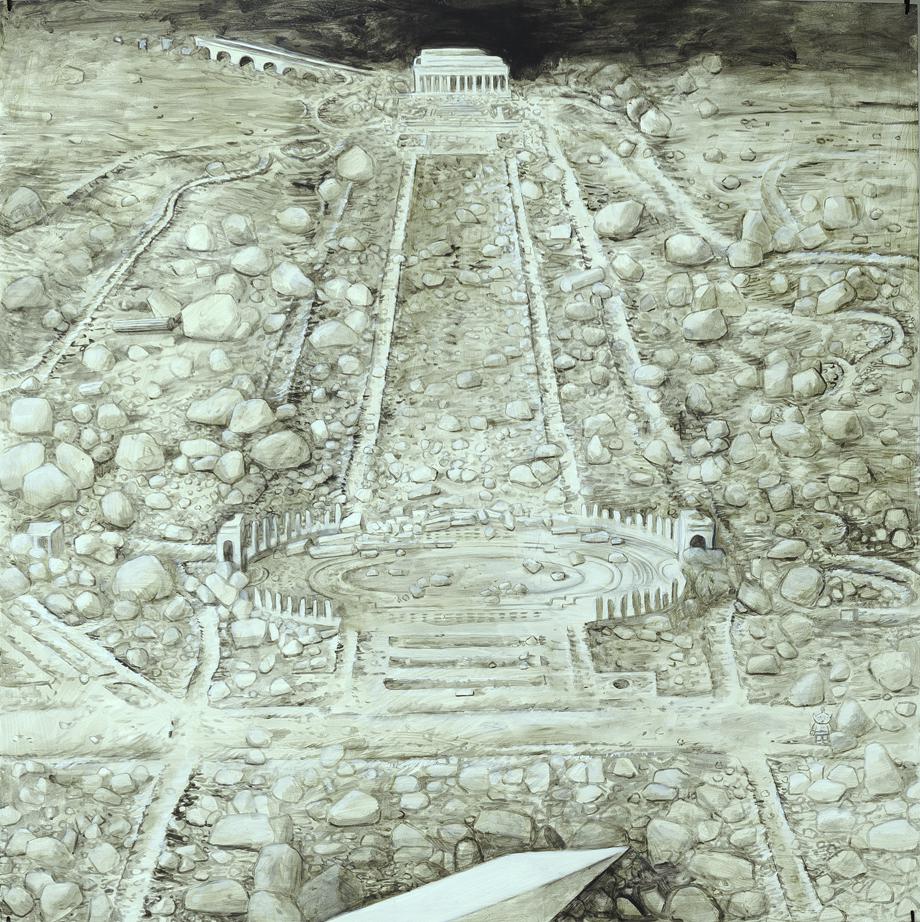The pandas at the National Zoo are locked away, the Smithsonian museums are shut down, the steps of the Lincoln Memorial are barricaded. But luckily the most delightful—and certainly the weirdest—exhibition in Washington is still open for a few more days.
Ellen Harvey’s “The Alien’s Guide to the Ruins of Washington, D.C.,” on display at the private Corcoran Gallery of Art until Sunday, is an exhibition that takes place in the future, after extraterrestrials have discovered a wrecked and depopulated Earth. The exhibit is their well-meaning attempt to understand why the late earthlings erected so many white, pillared buildings, especially in Washington.
The centerpiece of the exhibit is the alien’s pamphlet about the various ruins they’ve discovered in the city: “The Circle/Triangle Pillar Thing” (the Jefferson Memorial), “The Really Complicated Pillar Thing” (the Capitol), etc., accompanied by very earnest, and exceedingly wrong, alien-museum-curator speculation about the likely purpose of the particular ruin. Imagine what ancient Athenians would make of 21st-century academic articles about fifth-century Greek life, and you get some sense of what it’s like to read the aliens’ guide.
Harvey’s aliens also built themselves a souvenir stand, cheerily reminiscent of Washington’s own souvenir trucks, as well as their own pillar. And they have papered the walls of one gallery with 4,000 postcards of neoclassical buildings from around the world, sorted according to the aliens’ own peculiar classification scheme.
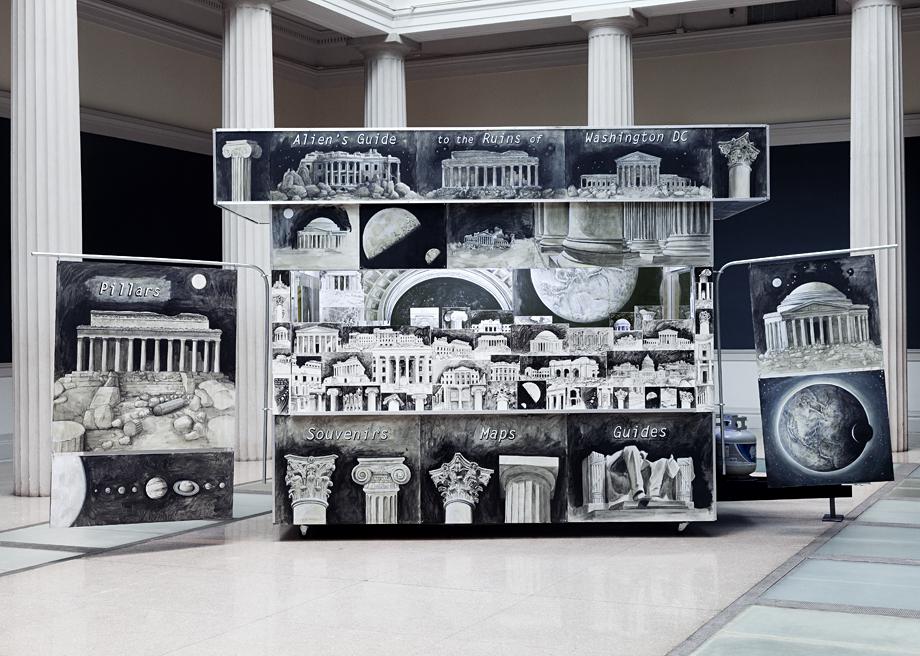
Photo by Etienne Frossard/Corcoran Gallery of Art
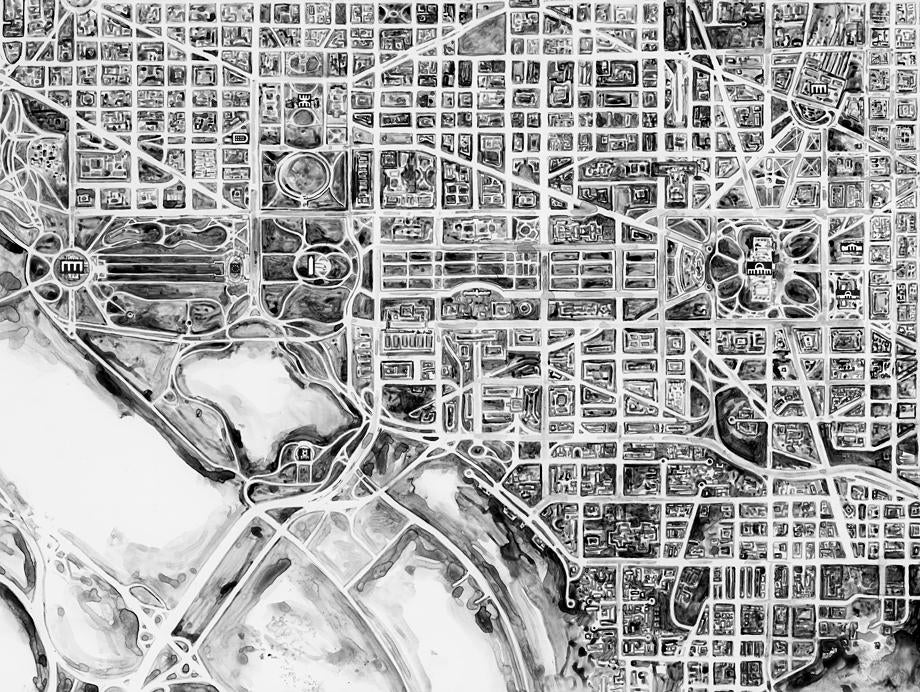
Photo by Ellen Harvey/Corcoran Museum of Art
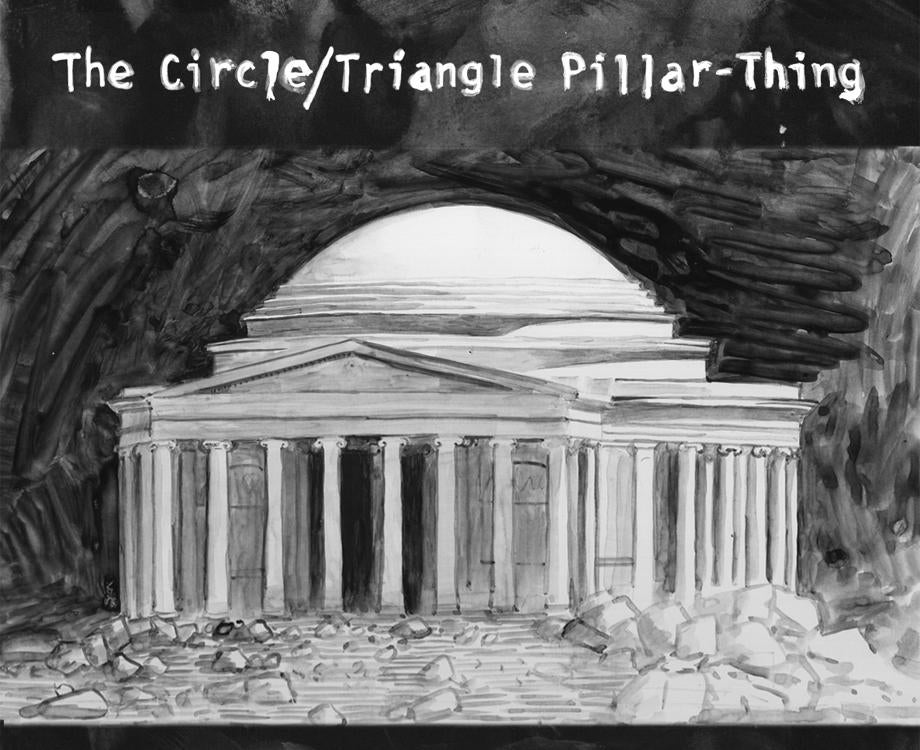
Photo by Ellen Harvey/Corcoran Museum of Art

Photo by Ellen Harvey/Corcoran Gallery of Art

Photo by Ellen Harvey/Corcoran Museum of Art
The exhibition never strays from its alien perspective and never winks. The result is strange and giddy-making. My children have never enjoyed a museum exhibition more, and I have never laughed harder at one. (In a canny bit of guerilla marketing that must have befuddled scores of tourists, the Corcoran over the summer placed the exhibition pamphlets among the glossy leaflets in Washington hotels—Spy Museum! Potomac River cruise! Brazilian steakhouse! Alien’s Guide to the Ruins of Washington, D.C.!)
Harvey, British-born and Brooklyn-based, says the exhibition sprang from a fascination with the omnipresence of classical and neoclassical architecture, styles that have meant all kinds of different things to all kinds of different people over 2,000 years. “It has been an architecture people have seen as representing democracy. It was also totalitarian. Stalin loved it. The Fascists loved it. It was connected to slavery. Plantations in the South—they look like mini Parthenons. In Britain, there was an imperial aspect to it. If neoclassical architecture was a virus, it would be the flu,” she says.
Harvey says she doesn’t know much about the aliens she invented, except that they’re very sweet: “All you can infer about the aliens is the guides they have written for themselves. Aliens are so often depicted as terrifying and evil. But what if they’re much nicer than us?”

Photo by Paul Bothwell/Corcoran Museum of Art
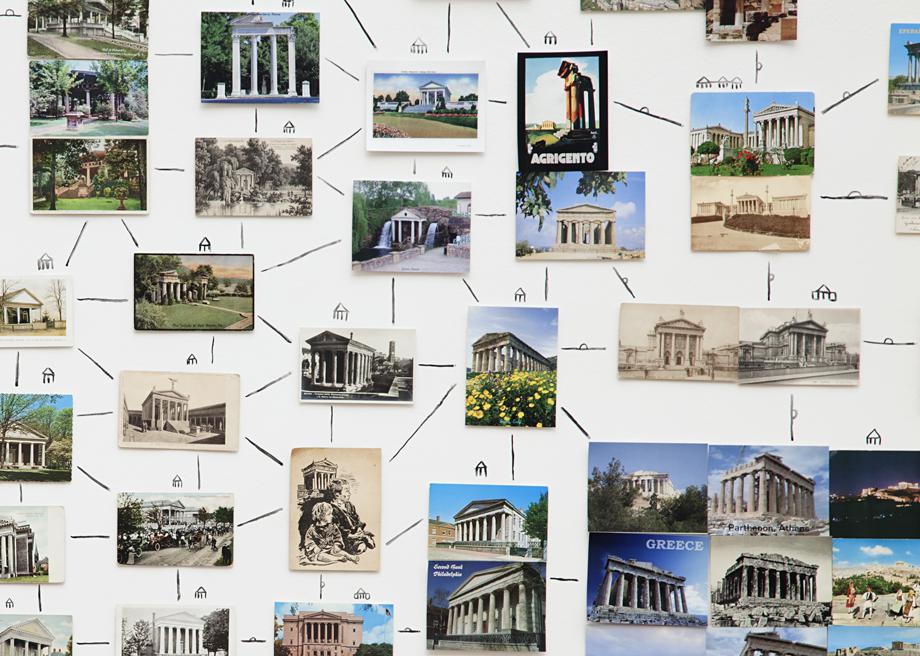
Photo by Paul Bothwell/Corcoran Museum of Art
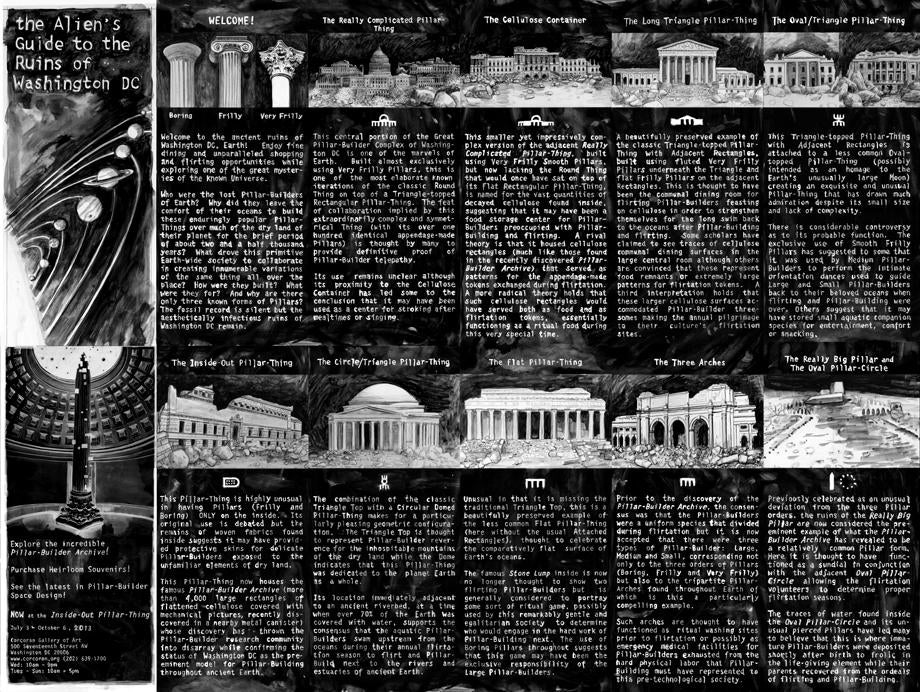
Photo by Ellen Harvey/Corcoran Museum of Art

Photo by Ellen Harvey/Corcoran Museum of Art
